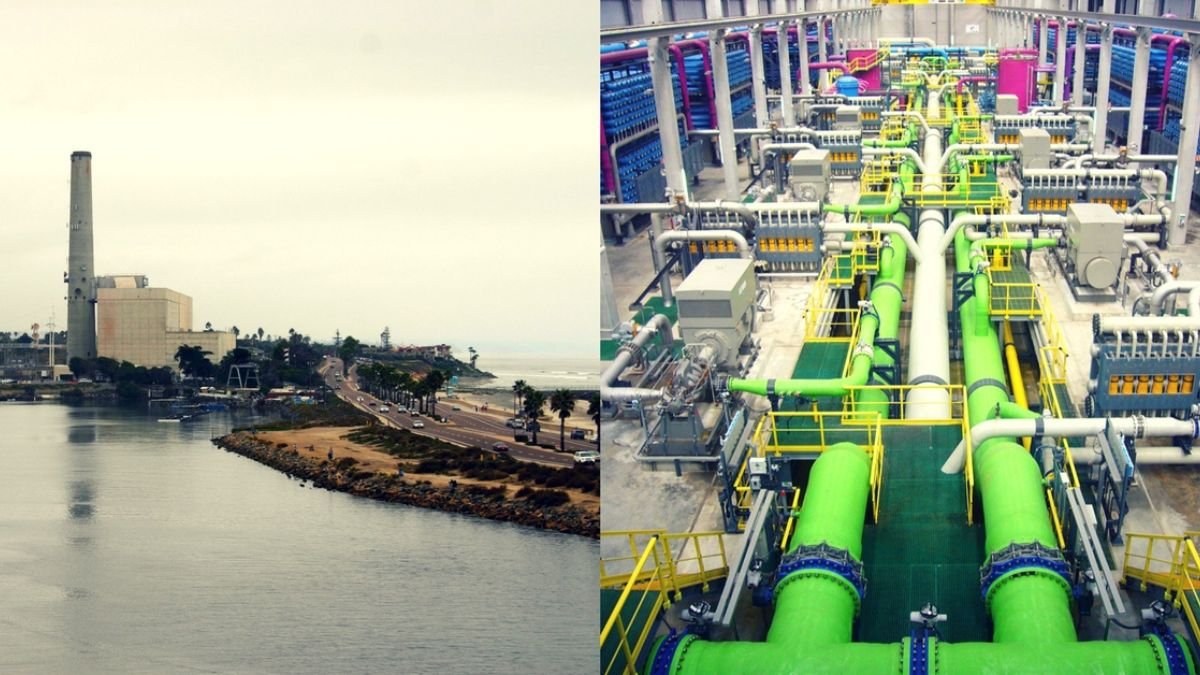Water scarcity has become a serious challenge around the world. There are many areas where rivers are drying up, groundwater levels are falling rapidly and climate change has also had a profound impact on rainfall. In these circumstances, desalination has emerged as an option. This technology provides drinkable fresh water from seawater. But the biggest problem with it is energy. The process of desalination is highly energy-intensive, and this energy mostly comes from fossil fuels. As a result, greenhouse gas emissions increase, environmental pollution occurs and costs also increase a lot. That is why it is called the “Energy Dilemma.”
The question in today’s situation is, can we make this energy-intensive technology sustainable? Can emerging technologies like artificial intelligence (AI) and nanotechnology provide a solution to this problem? Let us understand this whole issue in detail.
The main challenge of desalination: energy hunger
The biggest challenge of desalination is its energy consumption. High pressure and complex membrane technology are used to separate salt and other minerals from seawater. This process demands many times more energy than conventional water purification. For example, a large desalination plant needs as much energy to run continuously as is needed to power a small city.
Historically, most of the energy to run these plants was derived from fossil fuels. This not only proved to be expensive but also became a major source of greenhouse gases. Gradually, the problem became not only environmental but also economic, especially for countries that depend on energy imports.
Environmental concerns: Not only carbon, brine is also a problem.
Desalination is not only energy-intensive but it also poses a threat to the environment at many levels.
- Greenhouse gas emissions—Fossil fuel-based desalination plants emit large amounts of CO₂. This accelerates climate change and also increases air pollution.
- Brine discharge—The residue that comes out after the process of desalination is called brine. It is highly saline and often contains chemicals. If it is not properly dumped into the sea, it can severely damage the marine ecosystem. Marine life, especially corals and algae, suffers from it.
- Local ecological balance—Sometimes the hot water released from desalination plants also affects the sea temperature, which affects local fish and marine life.
Economic aspect: Why is this process still expensive?
The second major crisis of desalination is its cost. Since this process requires a lot of energy, the operational cost is very high. Rich Gulf countries can afford it, as they have an abundance of oil and gas, but it is a difficult option for developing countries.
In addition, billions of dollars have to be invested in setting up the plant. This is not possible for smaller countries and poorer regions. This is why desalination is often the least accessible in areas where water is most scarce.
Solutions: Renewable energy and new technologies
Now the question arises as to how to deal with this problem. Researchers and governments are making efforts at many levels.
1. Use of renewable energy
There is an emphasis on combining solar energy and wind power with desalination plants. For example, in desert areas where sunlight is abundant, solar-powered desalination plants can be installed. This will not only reduce carbon emissions but also control energy costs.
2. Technological advances
New membrane technologies are being developed that require less pressure to separate salt. This can lead to a major reduction in energy consumption. Also, hybrid systems such as a combination of reverse osmosis and thermal processes are also proving to be more efficient.
3. Role of AI
AI can make the operations of desalination plants smarter. For example, it can analyze energy consumption patterns and tell at what time the plant should run more or less. AI-based predictive maintenance can save costs by detecting machine malfunctions in advance.
4. Contribution of Nanotechnology
Membranes made of nanomaterials can separate salt more quickly and with less energy. This can make the desalination process revolutionary, cheaper and environmentally friendly. Possibilities of reducing the impact of brine and reusing it are also being explored through nanotech.
Energy management strategies
Time-variable energy tariffs are being implemented in many countries. This means that plants are incentivized to use energy only when there is a surplus in energy production. This not only reduces costs but also controls emissions.
Ways to go
The energy dilemma of desalination is not just a technical or economic problem but also an environmental and social challenge. In the future, if AI and nanotech are used properly, this process can become much less energy-intensive, cheaper and sustainable.
But it is also true that technology alone will not solve the problem. It requires a multi-pronged approach in which governments, research institutes and industry work together. Prioritizing renewable energy, complying with environmental regulations and investing in new technologies is the way forward.
Conclusion
Desalination is an important solution to water scarcity, but its energy hunger and environmental side effects make it controversial. If new technologies like AI and nanotech are used in the right direction, this process can be revolutionized in the coming years. This will not only provide more water with less energy but will also help in the fight against climate change.
With the growing population and depleting water resources around the world, the role of desalination will become even more important. Therefore, it is important that we take concrete steps towards making it sustainable for both the environment and the economy.
